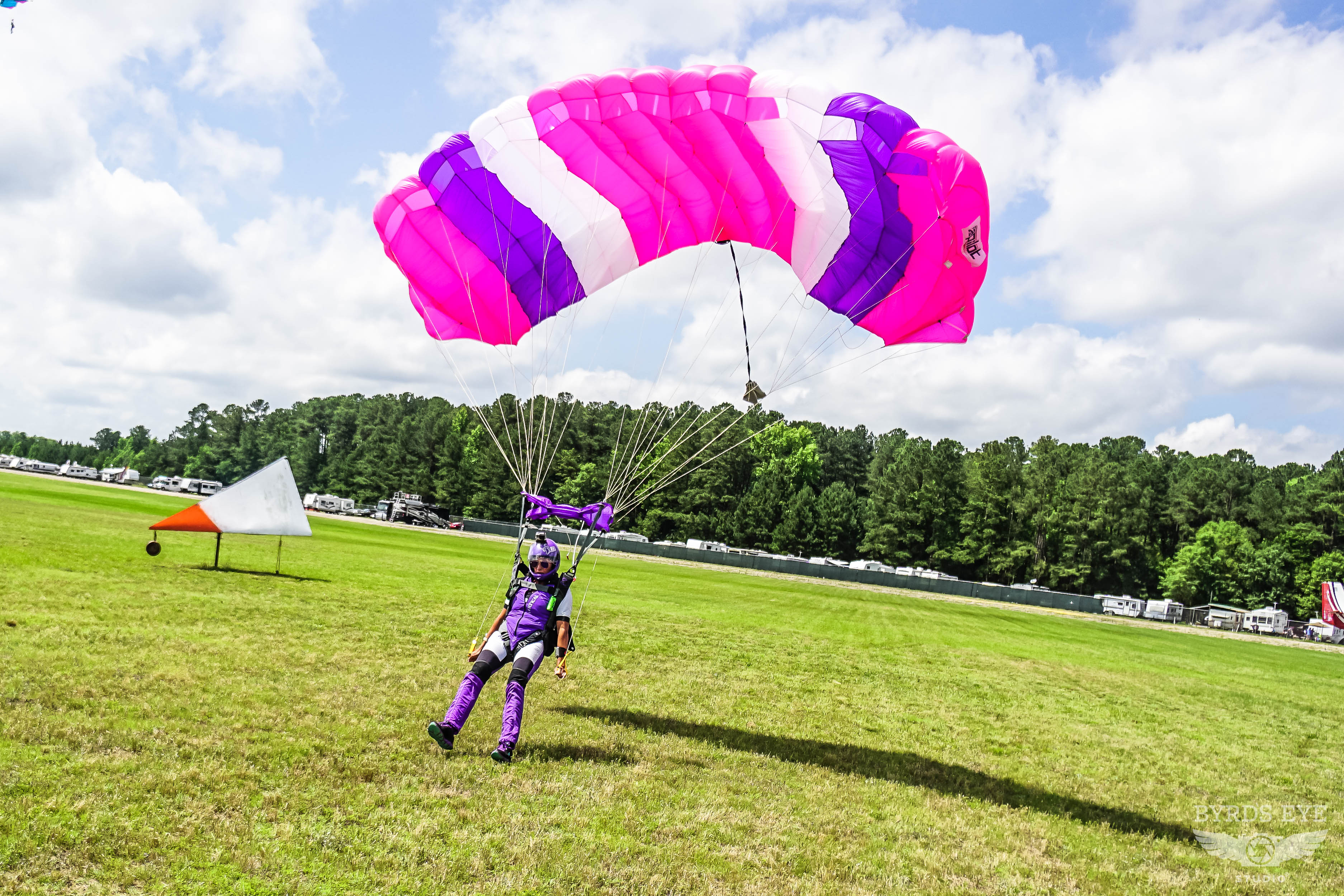Wow, how the heck do they do that?
Exactly. I see no mechanism for steering on those videos.
Normally, on a "square" (they are rectangular, of course) parachute, you have two control lines that go from the base of the risers all the way to the back of the parachute. Each control line can "close" or pull down one side of the back of the parachute. You use them to change the airfoil shape of the parachute. Think of the control lines as adding or removing flaps from an airplane wing.
To steer right, you would pull down on the right control line, giving the right side more flaps which causes less airflow on that side, causing a downward spiral towards the right. Both control lines all the way up give the most forward speed, but also fastest descent. You can slow down forward speed and slow descent by pulling down on both control lines to right before the stall point (yes, you can stall parachutes).
Here you can see a skydiver with both control lines all the way down. The chute is definitely in a stall, but that's what you do for landing. I forget how far above the ground you typically do this at, but at some point, you stall the chute just before landing and you literally do a tip toe stand up landing.
So, the control lines typically have travel from human arms all the way up to human arms all the way down. The not stall range is probably about 4 feet of travel.
So, to actively, remotely, control a parachute, you'd need to have a motor mechanism that can rapidly move the control lines up and down. And some sort of battery pack for power. I saw no evidence of either control lines or motors for this in the videos above.
To be fair, writing software to autonomously control a steerable parachute would be ... challenging




